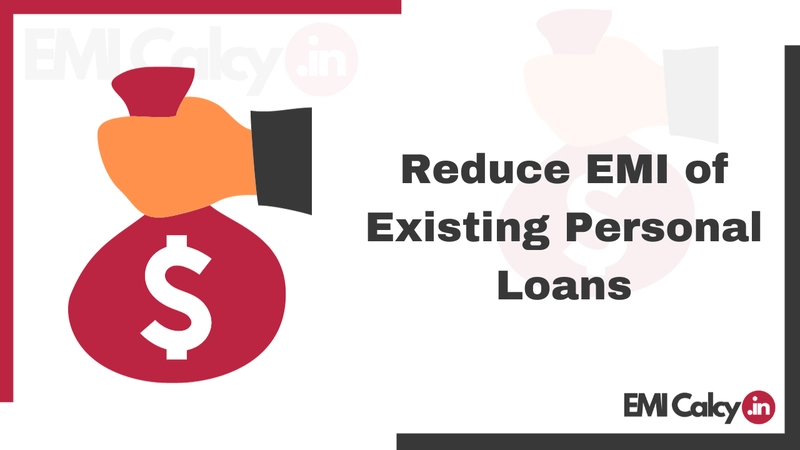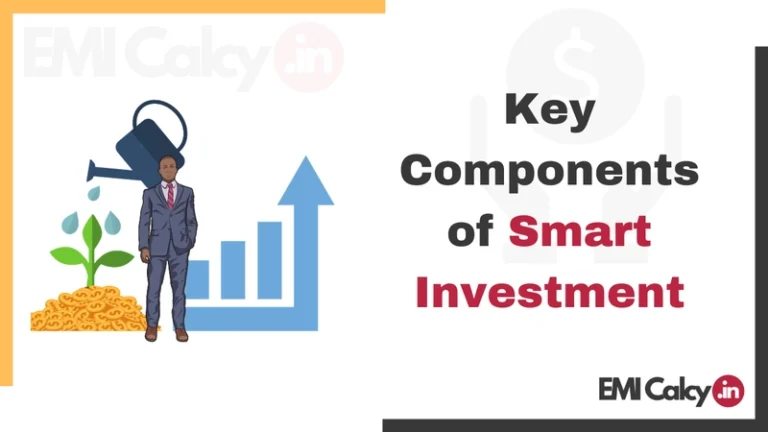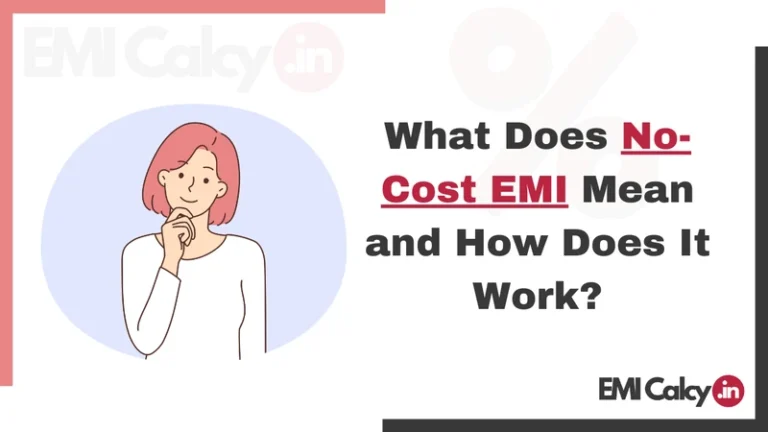In a country as diverse and economically vibrant as India, personal loans have become a ubiquitous financial tool, catering to a multitude of needs, from medical emergencies to home renovations and education expenses.
However, with the ease of acquiring personal loans comes the responsibility of repaying them, and for many borrowers, managing the Equated Monthly Installments (EMIs) can be a challenge.
Rising interest rates and financial uncertainties can cause EMIs to become a burden, making it crucial for individuals to find ways to reduce the EMI of their existing personal loans.
In this article, we will learn how to reduce personal loan EMIs, how to reduce the EMI of existing personal loans, and various strategies to help you better manage your personal loan EMIs and ultimately achieve financial peace of mind.
Understanding Personal Loans
Before diving into strategies to reduce personal loan EMIs, it’s essential to grasp the basics of personal loans. Personal loans are unsecured loans provided by banks and financial institutions to individuals for various personal purposes.
These loans typically have shorter tenures and higher interest rates compared to secured loans like home loans or car loans.
When you avail of a personal loan, repayment is typically done in monthly installments, which consist of both the principal amount and the interest charged by the lender.
These monthly installments are referred to as EMIs. It’s crucial to remember that the EMI amount remains fixed throughout the loan tenure unless you opt for specific repayment options like part-prepayment or foreclosure.
Now, let’s explore some effective strategies to reduce your EMI burden.
Related: Personal Loan EMI Calculator Online
1. Re-negotiate the Interest Rate
Interest rates play a significant role in determining the EMI amount. Even a slight reduction in the interest rate can lead to substantial savings over the loan tenure. You can consider negotiating with your lender for a lower interest rate, especially if you have been a loyal customer with a good credit score.
In many cases, lenders are willing to accommodate their reliable customers and offer reduced interest rates. However, it’s essential to keep an eye on market trends and be prepared to switch lenders if you find a better deal elsewhere.
2. Opt for a Balance Transfer
A balance transfer is a popular option to reduce the EMI of your existing personal loan. In a balance transfer, you transfer your outstanding loan amount to another lender offering a lower interest rate. This can lead to substantial savings on your EMI payments.
However, balance transfers may come with certain fees and charges, so be sure to calculate the potential savings and compare them with the associated costs.
3. Extend the Loan Tenure
While extending the loan tenure may not seem like an ideal solution initially, it can significantly reduce your EMI burden. When you choose a longer tenure, the EMI amount decreases, making it more manageable on a monthly basis.
Keep in mind that a longer tenure results in paying more interest over time. So, weigh the benefits of lower EMIs against the additional interest cost to reduce personal loan EMIs.
4. Opt for Part Prepayment
Part of the prepayment involves making additional payments towards the principal amount of the loan. By doing this, you can reduce the principal, which, in turn, lowers the EMI amount.
It’s crucial to check with your lender about any prepayment charges and terms associated with making extra payments. Part prepayment can be an effective strategy if you receive unexpected windfalls like bonuses or tax refunds.
Related: Longer Bank Loan EMI Tenure Pros and Cons
5. Consolidate Multiple Loans
If you have multiple personal loans, consider consolidating them into a single loan. Debt consolidation simplifies your financial situation, as you’ll have one EMI to manage instead of multiple ones.
Moreover, it might be possible to secure a lower interest rate with a larger consolidated loan, further reducing the personal loan EMI burden.
6. Improve Your CIBIL Credit Score
A good credit score can open doors to more favorable loan terms, including lower interest rates. Work on improving your credit score by paying your bills on time, reducing credit card debt, and monitoring your credit report for errors.
A higher credit score can help you qualify for loans with lower interest rates, which, in turn, will result in reduced EMIs. This article will help you improve your CIBIL score fast.
7. Opt for Step Up EMI Plan
Some lenders offer step-up EMI plans where the initial EMIs are lower and gradually increase over time. These plans are suitable for individuals who expect their income to rise in the future.
While the initial EMIs are lower, it’s important to factor in the increasing EMIs into your financial planning.
8. Consider a Cosigner or Guarantor
If your CIBIL credit score is not strong, you may consider involving a co-signer or guarantor with a better credit profile. Banks/Lenders are more likely to offer favorable terms when there is additional security in the form of a co-signer.
However, it’s essential to understand that the co-signer becomes responsible for the loan in case of default, so this option should be chosen with care.
Related: Bank Loan EMI Calculator Online
9. Evaluate Your Insurance Options
Certain personal loans come with insurance coverage that can help reduce your EMI burden in the event of unforeseen events like loss of employment, disability, or death.
Review your loan agreement and check if you have any such insurance. If not, you can consider purchasing it separately to provide a safety net for you and your family.
10. Avoid Missing Payments
Late payments can result in penalties and increased interest rates. Make sure you pay your personal loan EMIs on time to avoid unnecessary financial stress. Set up reminders or automatic payments to ensure you never miss a due date.
Conclusion
Managing the EMI of your existing personal loan in India can be challenging, but it’s not insurmountable. By considering the strategies mentioned above and customizing them to your specific financial situation, you can reduce personal loan EMI burden and achieve financial stability.
Remember that it’s essential to maintain open communication with your lender, regularly review your loan terms, and adapt your strategy as your financial circumstances change.
Whether it’s negotiating a lower interest rate, opting for a balance transfer, or making part payments, every effort to reduce your EMI can bring you one step closer to financial freedom.
Related: Home Loan EMI Calculator Online
FAQs on How to Reduce Personal Loan EMIs
Is a balance transfer a good option for reducing EMI?
A balance transfer can be an effective way to reduce EMI if you find a lender offering a lower interest rate. However, consider associated fees and charges before making the decision.
What are the benefits and drawbacks of extending loan tenure?
Extending the loan tenure lowers the EMI amount, making it more manageable. However, it also means paying more interest over time. It’s essential to weigh the benefits of lower EMIs against the long-term cost.
How does improving my CIBIL credit score help reduce EMIs?
A better CIBIL credit score makes you eligible for loans with lower interest rates. Lenders often offer more favorable terms to borrowers with good credit. Lower interest rates directly result in reduced EMIs.
What is part prepayment, and how does it reduce personal loan EMI?
Part prepayment involves making additional payments towards the principal loan amount. This reduces the principal, which, in turn, lowers the EMI amount. Ensure you check with your lender for any prepayment charges and terms before making extra payments.
Disclaimer: The tips and strategies provided on reducing EMI for existing personal loans are intended for educational purposes only. These suggestions should not be considered professional financial advice. Every individual’s financial situation is unique, and it is advisable to consult with a qualified financial advisor or your lending institution for personalized guidance before implementing any EMI reduction measures.







